The many myths of bodybuilding lurk in gyms like bugs at a picnic, scurrying out from under the rocks at the first sign of sandwich crumbs. They can come from anywhere, but if you fall victim to them, you could end up going nowhere with your training.
For example, people see a cover shot of a guy with ripped abs, and someone says, “That guy circuit trains his abs.” Next thing you know, 15 guys in the gym are circuit training their abs. Someone else says, “That guy takes a truckload of drugs,” and then everyone thinks that’s what needs to be done—like it’s written in stone.
Big arms? Remember when that guy in “Pumping Iron” said, “I’m in heaven when I’m pumped”? Because of that, every guy in the gym believes the pump is what builds big arms. Your beliefs about training can make or break you. If you want big arms, choose your beliefs wisely.
Five minutes into my conversation with Mike O’Hearn, I realized that the guy is all about destroying myths and rewriting the rule book. If fact, he threw the rule book out the window, got out a notebook and started writing.
DY: I’m going to jump right into it. The headline is, “Build 21-Inch Arms Naturally.” I mean, c’mon, man, you’re a cover guy. You must train like a pretty boy, right?
MO: No way, brother. I train heavy—real heavy. If you focus on squats, bench presses, deadlifts and chins—stick with basic heavy exercises—you’ll get big, your arms will grow, and you’ll be strong.
I’ve found that that’s the only thing that works. My genetic shape doesn’t change due to the way I train. Myths say that you can’t do heavy benches, chins, deadlifts and squats. I throw out the myths. I’ve proved it, and I continue to get stronger and improve.
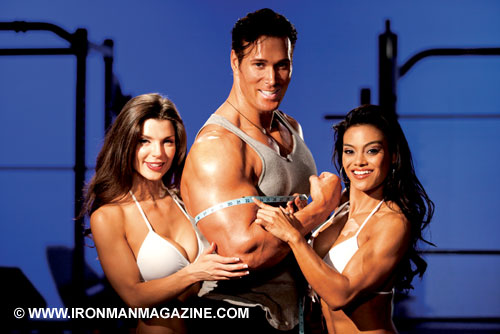
DY: So the core of your arm routine is squats, chins, deadlifts and bench presses?
MO: My working weight on the bench is 500 pounds—that builds triceps. Deadlifts with no straps at 700 pounds—want forearms? Chins with 100 to 150 pounds tied to me—got biceps? Squats—name a muscle group that doesn’t get worked.
DY: Obviously that’s your foundation, but let’s take a step back. You’ve excelled at bodybuilding, winning the WBA Mr. Universe four times; you excelled at powerlifting, Olympic weightlifting and martial arts. How do you balance all those training styles?
MO: I never lost that school mentality. You go from first period to second period—you’ve got English, then you’ve got math, then P.E. You’ve got six different things that you’re doing. And I never liked doing just one thing; I liked the variety that you get from doing everything.
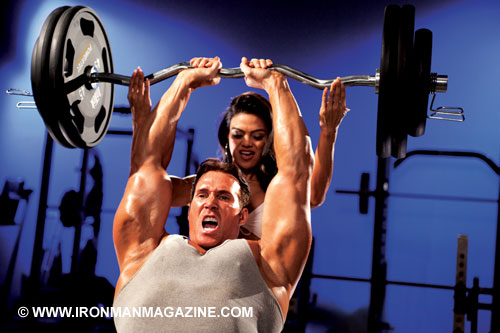
DY: That makes sense. Where did the drive come from?
MO: I’ve got nine brothers and sisters, and when I was growing up, I was getting my ass kicked by my brothers and my sisters. So I knew I had to be both strong and athletic. That drive was infused into me right then. It was like trying to be both like Bruce Lee and Arnold Schwarzenegger.
DY: Taking that to the next level, how do you get from being a guy who just wants to work out and build a little muscle to someone who wants to really excel at all those things? Where does the mind-set come from?
MO: It was set in me early on. I was in special-ed classes most of my life. I was a kid who was told I could never really accomplish anything. Not by my family. Definitely not by my family. More by society and people at the gym. I couldn’t read, so that was a huge factor for me. And so I thought, “Okay, sports is where I’m going.” I made that commitment when I was young.
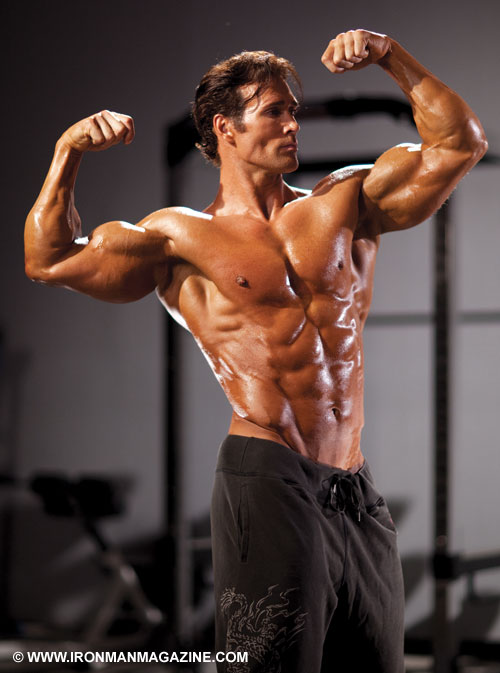
DY: What was your reading issue?
MO: I was dyslexic. At that time they didn’t know really how to deal with it. Dyslexia is an imbalance of understanding and IQ. So I had to figure out everything through my own intelligence and ability to reason because I couldn’t read and write. It scarred. You know, every kid’s got their scars. I was the kid who always stuck up for the special-ed kids. So I was fighting the school bullies and all that stuff.
DY: So you decided to be the guy who fights back?
MO: Yes. I learned at a young age that I worked off of negatives. The more they said, “You can’t,” the more the Irish in me said, “Yeah, just watch!”
DY: That’s powerful stuff.
MO: There’s this Irish mentality that says, Don’t tell me what to do ’cause now I’m going to go and do it anyway. And that’s totally how it worked with the steroid factor.
They said, “You can’t compete; you can’t do anything unless you take steroids.” My thoughts were, Okay, let me show you.
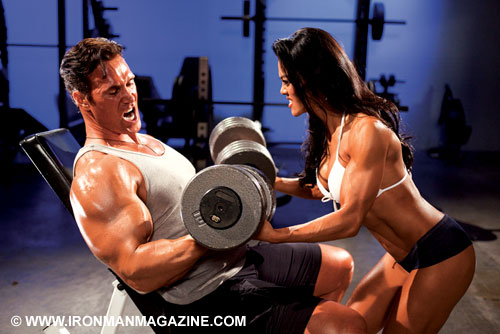
DY: You just weren’t going to believe that steroids were needed?
MO: Growing up in an Irish-Scottish-German family, man, we were stubborn. I mean stubborn. I always liked the underdogs. I’m glad I went through the school system in the special-ed class with the underdogs. I think it helped develop the heart I’ve needed to succeed. I like leading the charge, protecting the underdog, and I feel my life is about leading someone into battle. As an example, when my agent said, “Hey, do you want to try out and get on ‘American Gladiator’ again?” Someone said, “You don’t have to worry about doing the tryouts or anything—we can probably just get them to bypass that.” I’m like, “No, no, no. I don’t do that. If I get the spot, I have to earn it. I’ll go through the tryouts. If I deserve the spot, I do it like everybody else.” Don’t give me something. That’s not me. Steroids give it to you. Not me. I want to earn it.
DY: What a great perspective.
MO: Everything I do is a battle within myself. That’s what I love. It’s me trying to prove it to myself, not trying to prove it to anybody else.
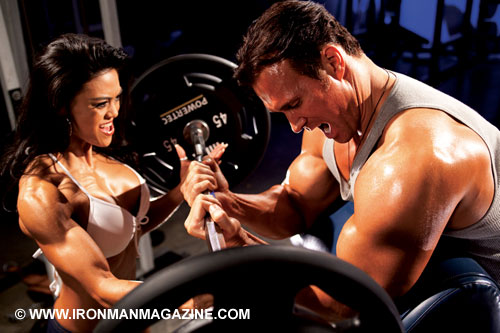
DY: So is it more the battle than the outcome that nails it for Mike?
MO: It really comes down to the battle within myself. When I was 12 years old and I walked to Jeff Magruder’s gym in Washington, I saw all these guys moving all this incredible weight, and I thought, Now, there’s something I want to do. I also saw them over the years. At one point they would be so strong, and at other times they would be not so strong. Then I found out that some of those people were doing chemicals. And I thought, Well, what’s the point of getting up and, for example, benching this big, big number, and then six months later you can only do 60 percent of that. I said to myself, “I want to be strong year-around!” You know, at that age it’s all about being strong and tough and big arms and so forth. With martial arts, it’s: I want to go to battle every day. I don’t want to ever go backward. As I got older, I found out more about the drugs and that you can’t keep the strength and size, and I thought, That doesn’t make any sense. It’s all about longevity for me. You know I’m stronger now than I’ve ever been. People say, “Well, I saw so-and-so, and he did this kinda weight and that kinda weight.” I can do that weight every week, not just for a meet or a competition. I’m looking for strength and power every day and week, so drugs just don’t make sense to me. I’m not looking for that 16-week climb, where I’m going to be strong, and 16 weeks after that I’m going to be weak again. Or I’m going to big and sliced for a show, and I’ll wither away into nothing after that. That’s just not me.
DY: What else motivates you?
MO: I got to do interviews for Bodybuilding.com at the Olympia this year. I covered the strength contest between Ben White and Johnnie Jackson. It was just so cool. It got me so-o-o jacked up. I was like, Man, I want to come down and train with you! At Gold’s, Venice, I’m one of the few guys who still trains heavy. Everyone looks at me like, “Dude, you’re crazy.” In the mid-’90s everyone at Gold’s was lifting heavy.
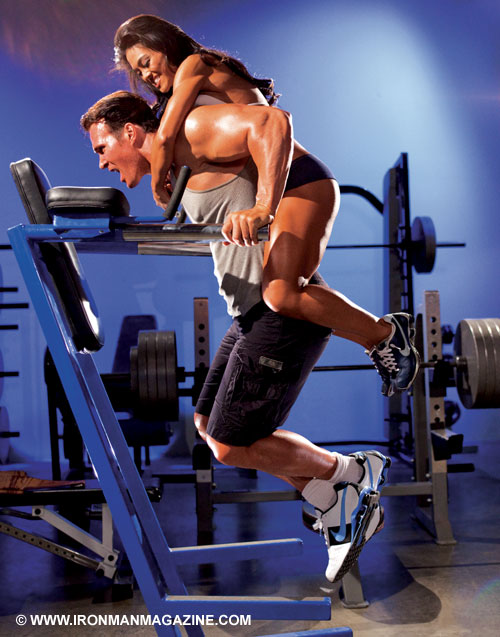
DY: What else?
MO: I love challenges. No 275-pound man should set the record for pullups, but I did 35 in 30 seconds. The next closest guy was a 190-pound guy who did 26 in 30 seconds. Mind you, that’s on a seven-city tour where most cities had 3,000 contestants.
DY: If you’re doing a tour or a tryout, there are going to be guys who are as physically capable as you, but there has to be something inside Mike O’Hearn that is different—something that says, No, no, no, I cannot allow myself to be defeated.
MO: It’s a mind-set. When someone tells me I can’t do something, I’m like, “That’s your first mistake right there. You assumed one thing about me, and I’m already assuming I’m not going to lose the battle.” You have to have that mind-set in the gym. Anyone can walk in and do curls and pushdowns. The battle is what builds your arms.
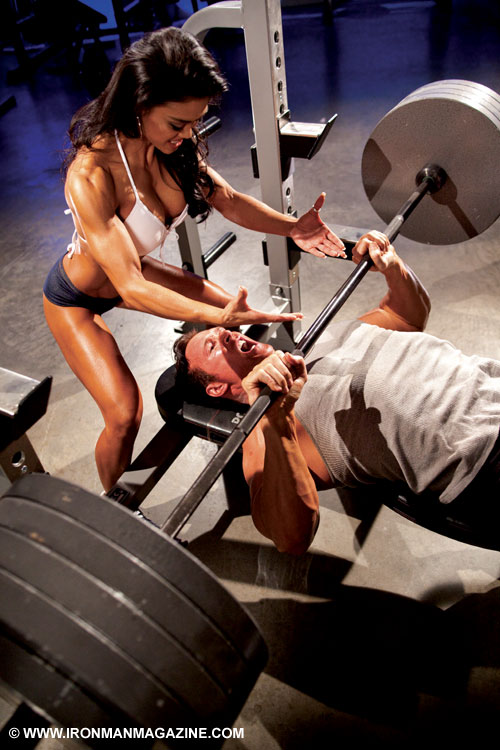
DY: Given your stance on training naturally, what do you do in your diet to enhance muscle growth, strength and muscularity?
MO: There is a huge difference between chemicals, steroids and growth hormone and real food, supplements and vitamins. First and foremost I focus on food intake —that’s the foundation—but I’m a huge proponent of supplements. I take HTP, calcium-magnesium-zinc, branched-chain amino acids. Bodybuilding.com has me well supplied.
DY: Can you list a day’s worth of eating and supplements?
MO: Sure.
Meal 1
12 ounces baked salmon
1 cup white rice
Multivitamin
Fat-burners
Vitamin C
Vitamin E
Meal 2
12 ounces baked chicken
1 cup oatmeal
Branched-chain amino acids
Multivitamin
Vitamin C
Workout
Meal 3
8 ounces steak
1 cup rice
1 cup broccoli
L-glutamine
Multivitamin
Vitamin C
Branched-chain amino acids
Meal 4
Chicken salad with 8 ounces
chicken, no dressing—I use
lemon.
No supplements
Meal 5
8 ounces steak
1 cup asparagus
Multivitamin
Meal 6
16 ounces salmon
Branched-chain amino acids
L-glutamine
HTP
Calcium-magnesium-zinc
DY: That almost sounds like a contest diet.
MO: I’m pretty strict. I don’t go far off of it ever. I’m out there doing appearances and auditions, so I don’t get the luxury of going out and having pizza and all that stuff. I only cheat on rare occasions. My cheat meal is vanilla ice cream with Nutella and strawberries—but I don’t recommend that because once you have it, it’s all over.
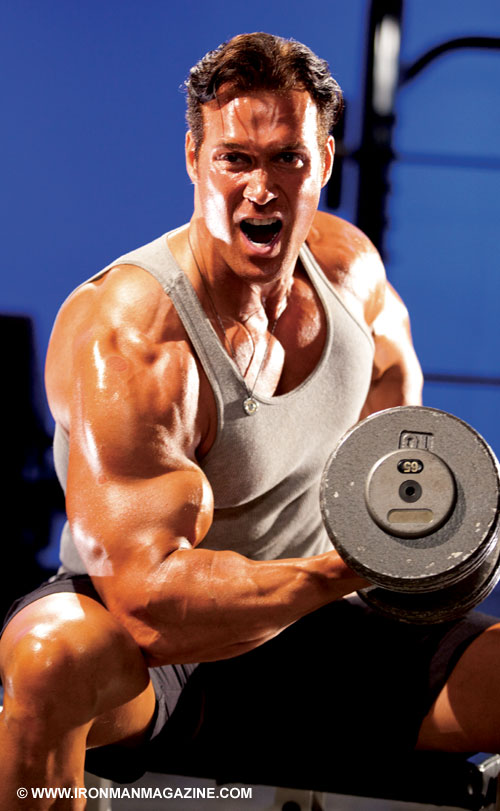
DY: How do you plan out your training week?
MO: Monday is leg day—quads in the morning and hamstrings in the afternoon. On Monday mornings squats are the key. I don’t count sets because 500 pounds and 600 pounds are not sets for me. I don’t start counting sets until I hit 700 pounds. Once I hit my heavy weight, I do five to seven sets of two to four reps. I never skip squats. Squatting is like breathing to me. So the schedule looks like this:
Monday morning: Quads
Squats 5-7 x 2-4 x 700+
Leg presses 4 x 10-12 x 2,000
Hack squats 4 x 10-12 x 800
Leg extensions 4 x 10 -12 x stack
Monday Afternoon: Hams
Lying leg curls 4 x 10-12 x stack
Seated leg curls 4 x 10-12 x stack
Walking lunges 4 x 10-12 x 225
Monday night: Cardio
Judo class x 2 hours
Tuesday morning: Chest
I don’t count bench press sets until I get to around 500 pounds. When I hit my heavy weight, I do 5-7 sets of 2-4 reps:
Bench presses 5-7 x 2-4 x 500+
Incline barbell presses 4 x 8 x 455
Decline barbell presses 4 x 8 x 405
Flyes 4 x 8 x 140
Tuesday afternoon: Abs
Full decline situps with a 45 pound plate behind my head 3 x 10
DY: You do weighted situps? Doesn’t that build a thick waist?
MO: I do weighted situps, and I’ll still go onstage with a 29-inch waist. It works.
Wednesday morning: Back
Deadlifts 7 x 2 x 700
Bent-over rows 4 x 8 x 455-495
Pullups 4 x 8 x 100-150 + bodyweight
Seated rows 4 x 8 x stack
Hyperextensions 4 x 8
Shrugs 4 x 8 x 800
Wednesday afternoon: Calves and abs
Calf raises 5 x 20
Full decline situps with a 45- pound plate behind my head 3 x 10
Wednesday night: Vale Tudo
class, which is mixed martial art
training x 2 hours
Thursday morning: Arms
45 degree incline curls 4 x 10 x 90s
Standing straight-bar curls 4 x 10 x 225
Preachers curls with EZ-curl bar 4 x 10 x 225
Close-grip bench presses 4 x 10 x 455
Pushdowns 4 x 10 x 180
Lying extensions 4 x 10 x 225
Thursday afternoon: Calves and abs
Calf raises 5 x 20
Full decline situps with a 45-
pound plate behind my head
3 x 10
Friday morning: Shoulders
Dumbbell clean and jerks 4 x 10 x 120s
Behind-the-neck presses 4 x 8 x 315
Narrow-grip upright rows 4 x 8 x 225
Front raises 4 x 10 x 60s
Rear-delt-machine laterals 4 x 10 x stack
Friday night: Judo x 2 hours
DY: That’s quite a workout. What about your form with all that weight?
MO: I’m a powerlifter; we always use good form. I use no straps, no wraps, no suits and no belts.
DY: That’s a lot of weight you toss around.
MO: I entered the West Coast Strong Man Competition and won in ’07 and ’08. [Side note: When I was typing up this interview, I got a call from Whitney Reid, who was on the cover of the November ’09 IRON MAN. Whitney was in town training with Mike, so I asked Whitney if it was true that Mike handles the kind of weight he says he does. Here’s Whitney’s reply: “David, the guy is the strongest guy I’ve ever seen, and he trains harder than anyone I’ve ever trained with. Yes, he really is that strong.”]
DY: What about cardio?
MO: My martial arts training is six hours of cardio a week. Also, walking my dogs a few times a day is cardio.
DY: Tell us about your dogs.
MO: I have four. Elvis is my big boy, an Akita. Then there’s Bunny and Teddy, two girls that I rescued as pups—a Ridgeback and a Chow. Then there’s my girl, Stryker, a Siberian husky.
DY: Tell us about the rescues.
MO: Everyone should rescue a pet. We could empty the shelters. I was doing a cover shoot for a magazine, and they brought in two puppies. We finished the shoot, and they said, “Well, we’re done. Let’s take the pups back to the shelter.” I said, “No go. I’m taking them home.” They argued and said, “No, you have to fill out all this paperwork.” I said, “Look, guys, these two just got a home. We did something good here.”
DY: So now we find out about the animal lover, humanitarian side of Mike O’Hearn. Do you use any other intensity techniques?
MO: I don’t go into the gym to work out; I go into the gym to break down my workout partner. It’s kind of like a fun playground for me.
DY: I get it. You make a competition out of it.
MO: I go into battle on everything. That’s how I approach training. I think like a lot of champions. They don’t go in there to work out; they go in there to crush whoever’s training with them. Most guys are so much stronger than they think they are. Guys will say, Well, I’m worried about my knees or my back or whatever, and I say, You know what I’m worried about? I’m worried about the day that I don’t squat. I never want to go weeks without squatting. If you continue to squat, deadlift and bench, your body holds together because it forms such a solid foundation that you’re a walking tank.
DY: No supersets or drop sets?
MO: I like that meditation of me fighting the weight, me battling the weight. I don’t go in looking for the pump or the burn. I don’t try, I do. I go in to fight the straight bar on curls, and I battle the preacher curl bar. I approach the entire workout like that.
DY: Okay, I’m fired up. So what’s going on with “American Gladiators”?
MO: It’s getting turned into a movie. Right now me and a couple of the other Gladiators are doing a tour in Korea with www.ProSportsMVP.com. There’s nothing better than doing a USO tour. We went to Iraq and Afghanistan, and it’s just such a pleasure and a privilege to go over there and see those guys. They’re appreciative, and it’s a heartfelt thing to be able to say, “Thanks for being over here.” I just want to apologize to some of the troops for some of the arm bars I put on them.
DY: What about movies? Anything coming up?
MO: I just got done filming two movies. The first was a Universal Pictures production called “Minko,” the true story of Barry Minko. It starred James Caan, Armand Assante, Mark Hamill and Ving Rhames. It’s very similar to “Catch Me If You Can” with Tom Hanks and Leonardo DiCaprio. I had a great part in it. I played the actual hit man who comes after Barry Minko.
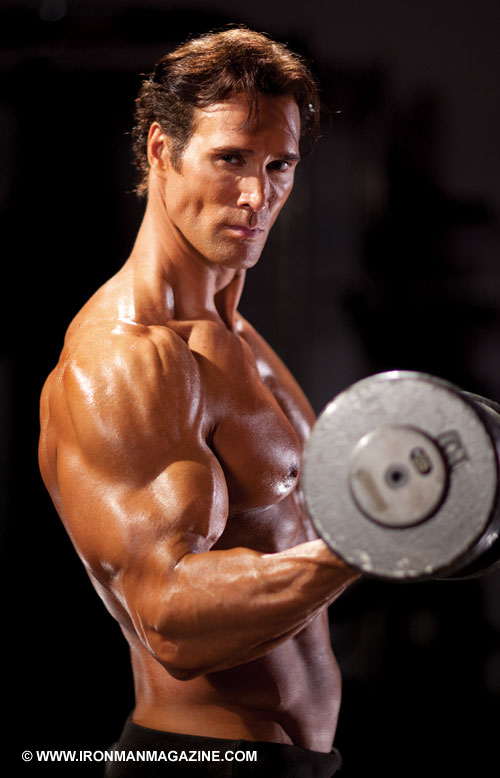
DY: What did you like best about filming that?
MO: Working with James Caan was so cool because he was saying, You should try this or try that. He was so helpful. I got to be a bilingual hit man. Not just a typical hit man but a very articulate, smart hit man. It will be out next year, and it’ll probably be the biggest thing I’ve ever done.
DY: And the other movie?
MO: It’s called “Alter Ego.” I am the lead. It’s a character who discovers that he’s a halfbreed—half-human, half-alien. He’s a superhero, but he has multiple personalities— he’s a little bit of a schizoid. He has three different characters, and they keep popping up through the movie, messing with him. It’s pretty cool. It’s probably the best thing I’ve done theatrically to date. I’m so proud of it. I get my ass kicked pretty much throughout the whole movie.
DY: Looking forward to it. Great interview. Readers should get more info on your Web site, right?
MO: Right. It’s www.MikeOHearn.com. Also check out your local animal shelter or pet adoption group. IM
















You must be logged in to post a comment Login